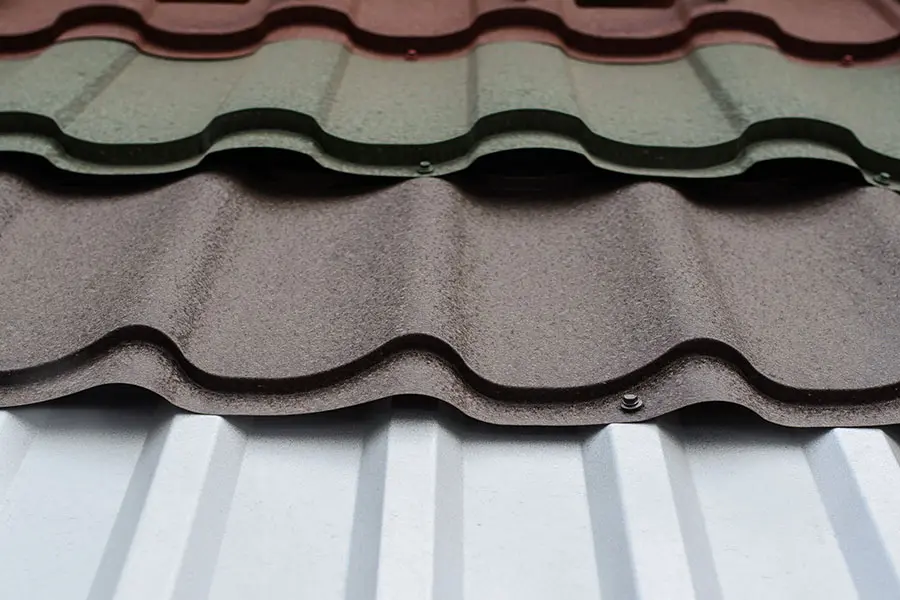How Gainesville Roofing Companies Can Transform Your Home's Exterior
How Gainesville Roofing Companies Can Transform Your Home's Exterior
Blog Article
Ideal Practices for Ensuring Appropriate Roof Air Flow
Making sure appropriate roofing air flow is important for the longevity and effectiveness of a roofing system. A well balanced intake and exhaust air vent ratio, typically 1:300, plays a pivotal duty, with intake vents preferably put at the lower side of the roofing for awesome air access and exhaust vents at the height for warm air departure. Regular examinations to determine blockages and keep clear airflow are extremely important. Maintaining insulation away from vents is vital to avoid air movement limitation. Recognizing these foundational components sets the stage for even more thorough insights right into setup and maintenance techniques that can dramatically boost your roof's efficiency.
Understand Air Flow Essentials
Properly comprehending ventilation fundamentals is crucial for making certain the longevity and effectiveness of roof. Effective ventilation reduces wetness accumulation and temperature extremes in the attic, both of which can lead to substantial architectural damage gradually. A well-ventilated roof helps in avoiding typical concerns such as mold and mildew growth, wood rot, and ice dams, which can compromise the integrity of the roofing materials and the underlying structures.
The main goal of air flow is to promote the activity of air, permitting a constant exchange between the interior and outdoor settings. This equilibrium is accomplished through a mix of consumption and exhaust vents that collaborate to preserve ideal airflow. Consumption vents, usually located along the eaves or soffits, permit fresh air to get in the attic space, while exhaust vents, commonly located at or near the roofing ridge, allow warm, damp air to get away.
Trick variables influencing the performance of roofing system ventilation consist of appropriate placement, sufficient sizing, and ensuring that both intake and exhaust vents are unhampered. Routine evaluation and maintenance are crucial to recognize possible obstructions, damages, or inadequacies in the air flow system, thereby guarding the roofing system's efficiency and longevity.
Kinds Of Roof Covering Vents
Roof vents play a vital duty in preserving effective attic air flow and, by extension, the total wellness of the roof system. Different kinds of roof vents are offered, each with distinct benefits customized to particular roof requirements. Ridge vents, as an example, are installed along the roofing's top, permitting cozy, damp air to escape from the attic. They offer continual ventilation and mix seamlessly with the roofline, making them both reliable and aesthetically pleasing.

Soffit vents are installed under the eaves and work in tandem with roofing system vents to make sure a balanced intake and exhaust system. By enabling cooler air to enter from below, soffit vents facilitate the expulsion of hot air with top vents. Gable vents, situated on the exterior wall surfaces of the attic, deal one more effective solution, particularly in homes with gable roofings.
Examine Your Present Air Flow

Following, take into consideration the age and problem of your roof products and ventilation elements. Older systems might not conform with existing building codes or may have deteriorated gradually, minimizing their effectiveness. Conduct a detailed examination to determine any indicators of wear and tear, such as rust, damages, or spaces that can endanger the system's performance.
In addition, determine the attic room temperature and humidity levels. High temperatures read review and moisture can indicate insufficient air flow.
Setup Best Practices
Reliable setup of roof air flow systems is critical for ensuring optimal efficiency and longevity. Proper installation begins with comprehending the certain ventilation requirements of the roofing and the structure it covers. This entails determining the appropriate proportion of intake to wear down vents, normally adhering to the 1:300 policy, which stipulates one square foot of air flow for every single 300 square feet of attic flooring space.

Consumption vents should be installed at the roofing's reduced side, typically in the soffits, to permit trendy air to get in. Exhaust vents, on the other hand, need to be set up near or at the roofing system's height to facilitate the leave of warm, moist air.
Seal all air vent links thoroughly to avoid air leakages and possible water infiltration. Use top notch materials and follow supplier standards to make certain longevity and efficiency. Additionally, incorporating ridge vents with baffles can significantly improve air movement performance by avoiding wind-driven rain and snow from going into the attic.
Eventually, precise installation of roofing air flow systems minimizes potential concerns such as mold growth, ice dams, and architectural damage, making sure the roofing's stability and the building's general health.
Normal Maintenance Tips
Consistency in maintenance practices is basic to making certain the long-term performance of roof covering air flow systems. Regular inspections are critical, ideally performed biannually-- in the springtime and autumn. During these examinations, ensure that vents are devoid of particles, nests, and other blockages that could restrain air movement. Look for any get redirected here kind of indicators of wetness build-up or mold and mildew, as these can indicate inappropriate ventilation or leaks (roofing companies).
Use a soft brush or a vacuum cleaner to remove dirt and particles from intake and exhaust vents. Be cautious not to damage the air vent screens or louvers during the procedure.
Proper insulation is just as essential. Make sure that attic room insulation does not obstruct the vents, as this can drastically limit airflow. Reposition or change it to maintain a reliable obstacle. if any insulation has actually shifted or cleared up.
Lastly, change any damaged or missing components quickly. Busted vents, fractured tiles, or deteriorated flashing can all add to insufficient ventilation and must be dealt with right away. Routine maintenance makes sure that the roofing air flow system works efficiently, therefore expanding the life-span of the roofing system itself.
Verdict
Guaranteeing proper roof ventilation is extremely important for maintaining the efficiency and toughness of a roof covering system. Adherence to the 1:300 intake and exhaust air vent proportion, combined with the tactical placement of vents, is essential. Regular biannual assessments, debris cleansing, and making certain insulation does not obstruct air movement are critical methods. Applying these ideal practices will certainly promote a well-ventilated roof, thereby alleviating prospective concerns associated to moisture accumulation and too much warmth, inevitably prolonging the roofing system's life-span.
A well balanced consumption and exhaust air vent proportion, commonly 1:300, plays a pivotal duty, with consumption vents preferably positioned at the reduced edge of the roof covering for great air entrance and exhaust vents at the top for cozy air exit. Consumption vents, normally situated along the soffits or eaves, permit fresh air to get in the attic area, while exhaust vents, typically situated at or near the roof ridge, allow hot, moist air to get away.
Soffit vents are mounted under the eaves and work in tandem with roofing system vents to make certain a balanced intake and exhaust system. By allowing cooler air to go into from below, soffit vents facilitate the expulsion of hot air through top vents. Adherence to the 1:300 intake and exhaust air vent proportion, combined with the strategic placement of check my site vents, is vital.
Report this page